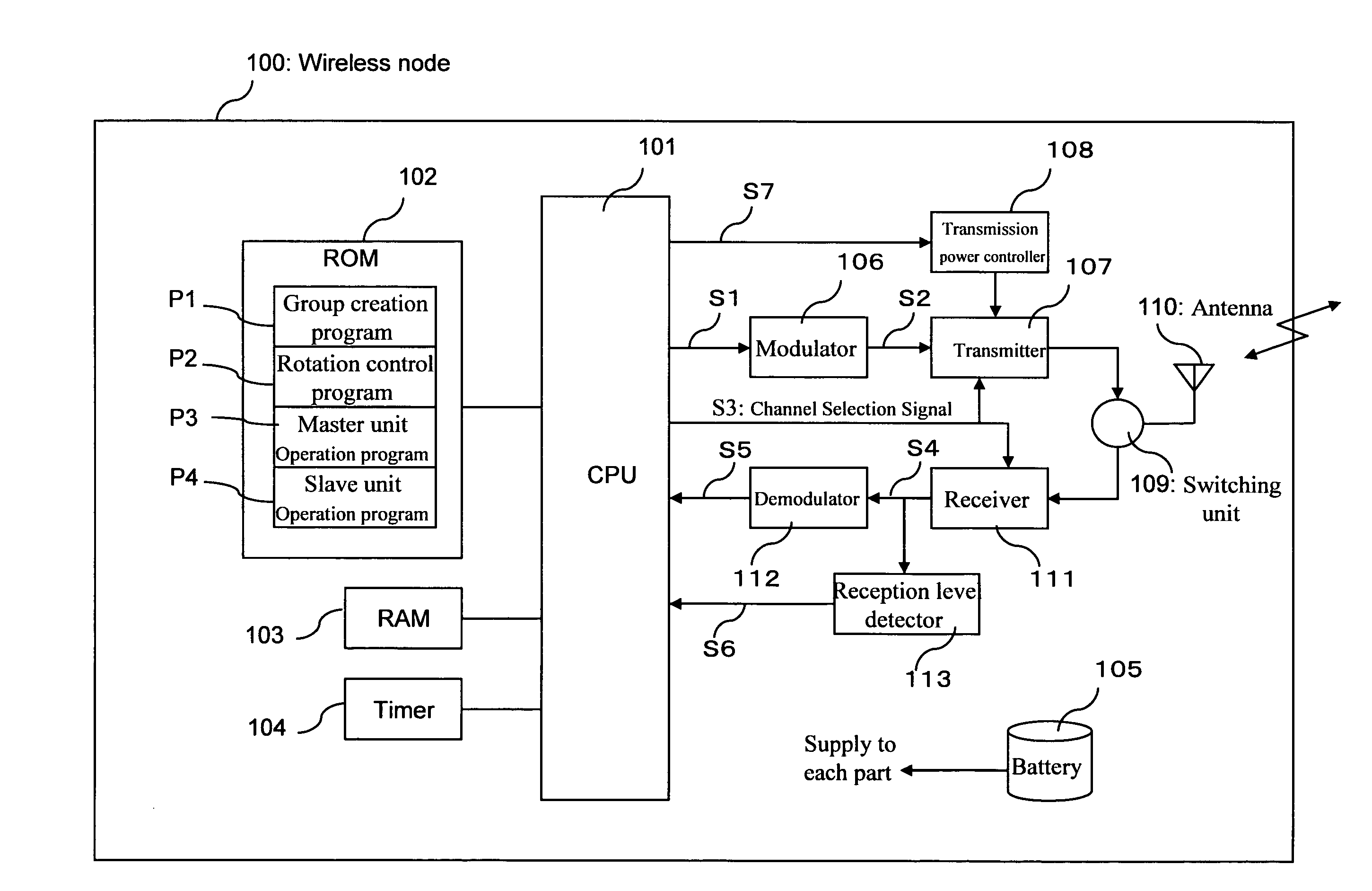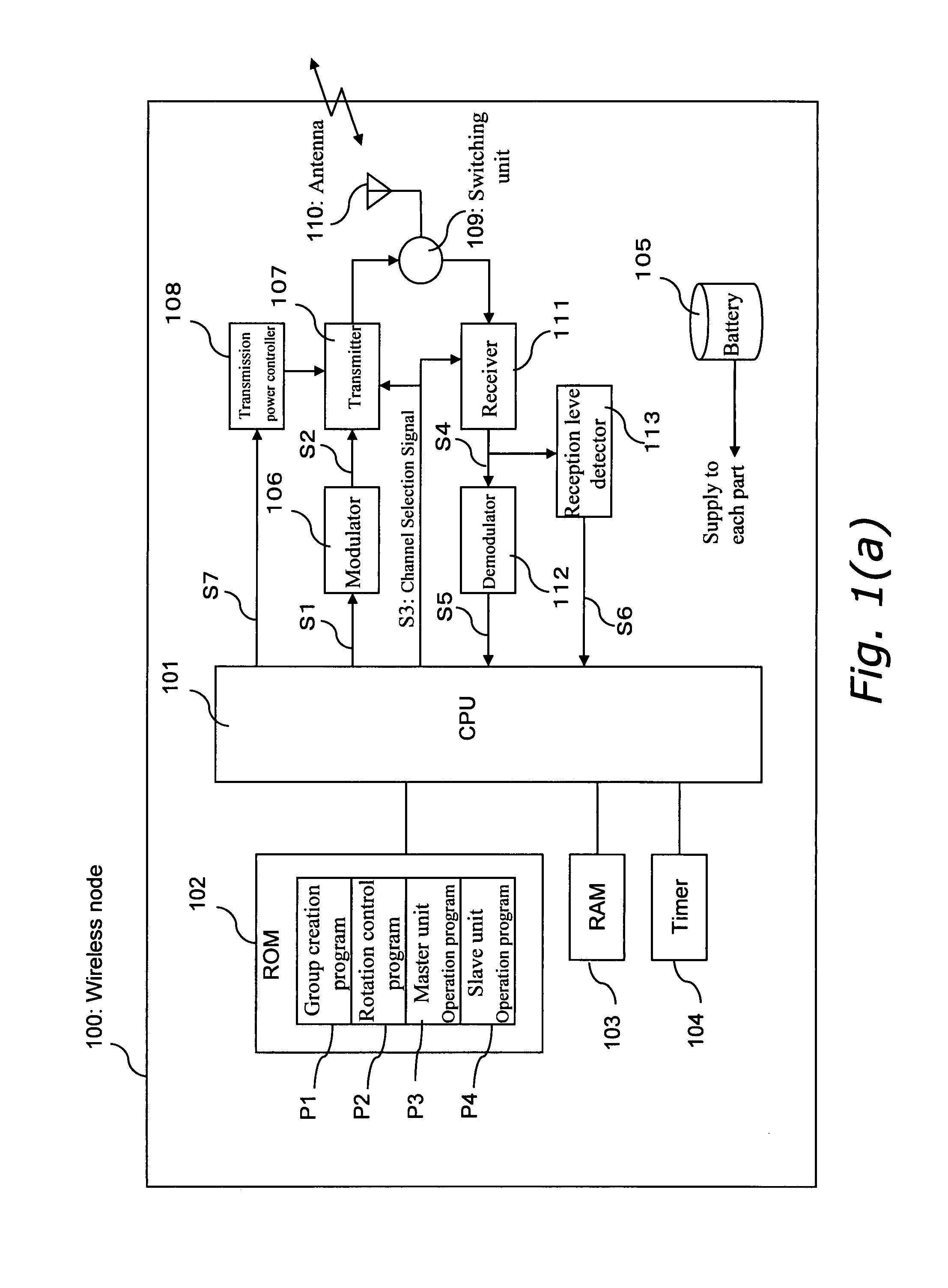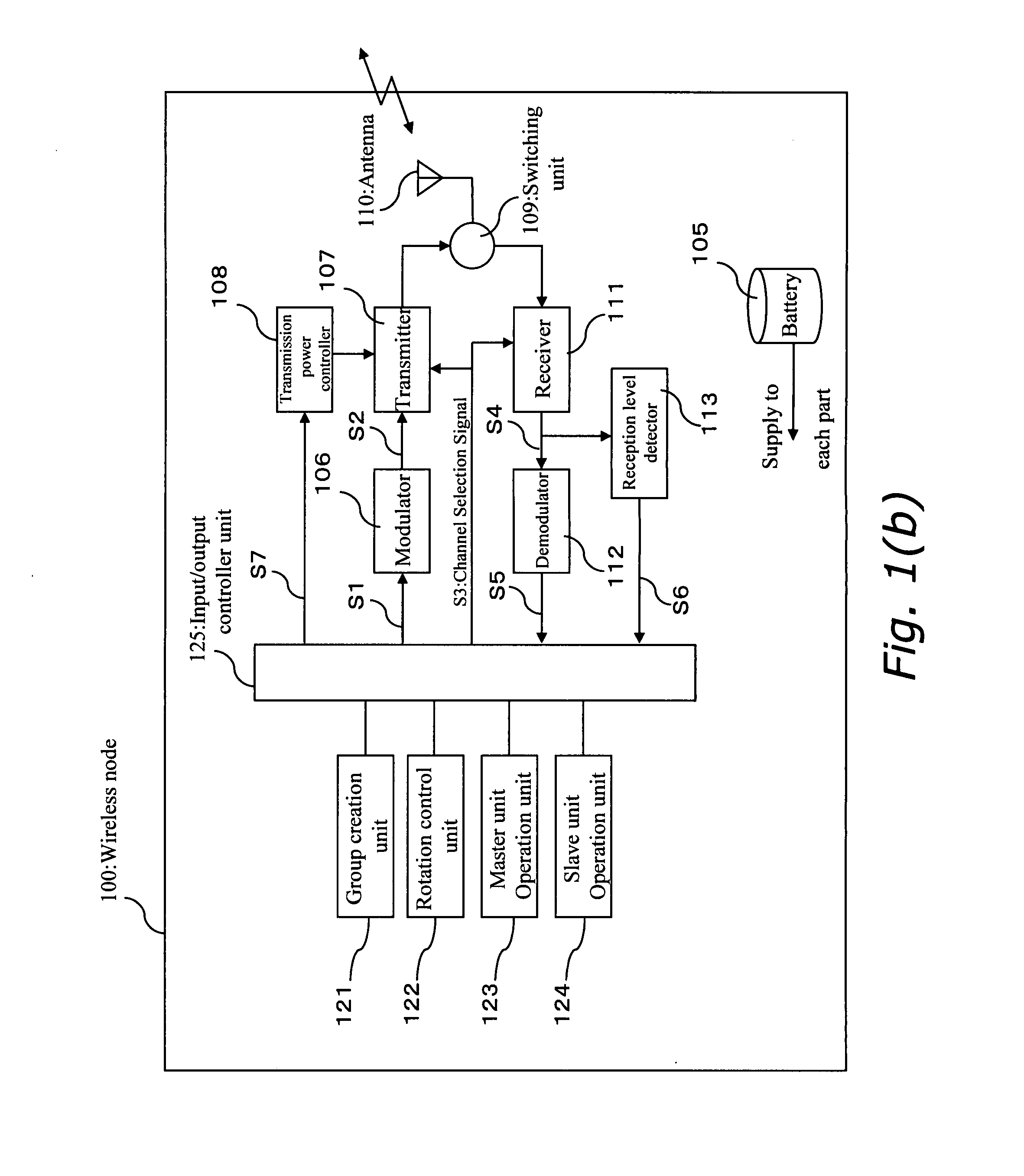Wireless Node Power Supply Managing Method
- Summary
- Abstract
- Description
- Claims
- Application Information
AI Technical Summary
Benefits of technology
Problems solved by technology
Method used
Image
Examples
first embodiment
[0073]FIG. 1 (a) is a block diagram of a wireless node in the first embodiment of the present invention.
[0074]In FIG. 1 (a), a wireless node 100 comprises a CPU 101 for controlling the various units of the wireless node and processing transmission / reception data, a ROM 102 having programs stored therein, a RAM 103, a timer 104, a battery 105 for supplying power to each unit of the wireless node including the CPU 101, a modulator 106, a transmitter 107, a transmission power controller 108, a switching unit 109 for performing switching between transmission radio waves and reception radio waves, an antenna 110, a receiver 111, a demodulator 112, and a reception level detector 113.
[0075]When the wireless node 100 is to perform transmission, it does so as follows. The CPU 101 executes the necessary programs from among a group of programs included in the ROM 102 while using the RAM 103 as working memory, and creates transmission data S1. The transmission data S1 is modulated by the modula...
second embodiment
[0120]FIG. 7 is a flowchart for explaining a group master rotation operation using communication traffic in a second embodiment of the present invention.
[0121]In FIG. 7, a group master node sets in advance a rotation traffic volume that is to serve as a criterion for determining time for group master node rotation (Step 701), receives slot data, and accumulates for each slave node the volume of communication traffic with such slave node (Step 702). When it has received data from all slots, it checks whether the volume of communication traffic with the slave nodes has reached the rotation traffic volume set in Step 701 (Step 703). If the communication traffic volume has not reached the rotation traffic volume, slot data reception is continued, and if the communication traffic volume of any one of the slave nodes has reached the rotation traffic volume, a rotation control program is started (Step 704). At this time, because it is assumed that the slave node having the least traffic vo...
third embodiment
[0126]FIG. 8 is a block diagram of a wireless node in the third embodiment of the present invention.
[0127]In FIG. 8, the same constitutional elements as in FIG. 1 (a) are assigned the same reference numerals, and explanation thereof is omitted.
[0128]In FIG. 8, a wireless node 800 comprises a battery power detector 801. The battery power detector 801 is configured to detect the amount of remaining power based on voltage and the like of a battery 105, and to input the battery power level S8 into the CPU 101. With such a configuration, the CPU 101 is capable of checking remaining battery power.
[0129]An explanation will be given with reference to the flowchart in FIG. 9 for the process of group master node rotation, using the wireless node 800 thus configured and based on remaining battery power.
[0130]FIG. 9 is a flowchart for explaining a group master rotation operation using remaining battery power in the third embodiment of the present invention.
[0131]In FIG. 9, a slave node checks r...
PUM
 Login to View More
Login to View More Abstract
Description
Claims
Application Information
 Login to View More
Login to View More - R&D
- Intellectual Property
- Life Sciences
- Materials
- Tech Scout
- Unparalleled Data Quality
- Higher Quality Content
- 60% Fewer Hallucinations
Browse by: Latest US Patents, China's latest patents, Technical Efficacy Thesaurus, Application Domain, Technology Topic, Popular Technical Reports.
© 2025 PatSnap. All rights reserved.Legal|Privacy policy|Modern Slavery Act Transparency Statement|Sitemap|About US| Contact US: help@patsnap.com



